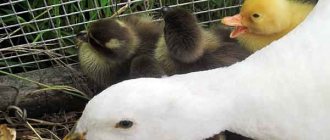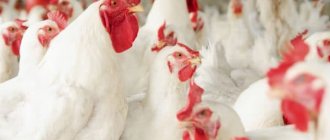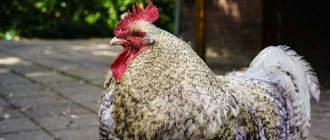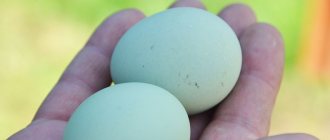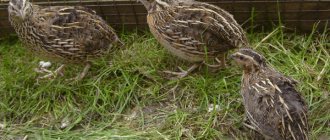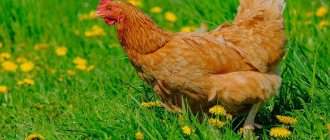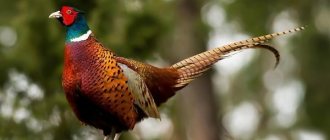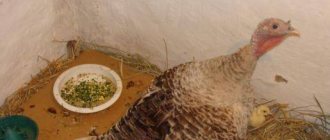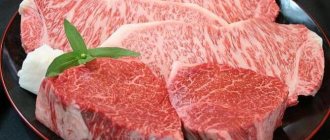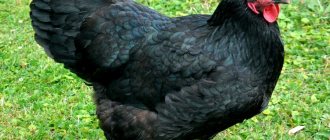The breed was bred by specialists from the Zagorsk Institute of Poultry Breeding. The ancestors of the breed are the Russian White and Yurlovskaya Volosistaya, as well as New Hampshire and Rhode Island. Breeders acted according to a scheme that helped achieve high egg production and good meat qualities. Read more about the characteristics and breeding conditions later in the article.
Origin
The current Sergiev Posad, formerly Zagorsk, is still proud of its poultry farming institute, which once had all-Union significance. The breeding scientists of this research center did not rack their brains over the age-old question: “What came first: the egg or the chicken?”, but they themselves produced a new, unique, hardy meat and egg breed, for which all of Russia and its neighbors never tire of thanking them countries. The chicken turned out really great!
Zagorskaya salmon is a hybrid of Russian white, Yurlovskaya volosistaya, New Hampshire and Rhode Island. From each of these breeds, Zagorskaya inherited the best qualities, which are emphasized by the uniqueness of the newly bred breed.
Compared to other important and ancient breeds of chickens, the Zagorsk Salmon has a very modest history : if we take 1955 as the starting point for its birth (and some sources indicate both 1950 and 1959), then in 2015 this young breed will celebrate its 60th birthday -anniversary Only 60 years old, but these chickens have already been worthy of appreciation both in small private farms and in large agricultural companies specializing in poultry breeding.
Frequent illnesses
Representatives of the breed are distinguished by strong immunity, therefore they are immune to most pathologies of poultry. The main danger for them are viral and bacterial diseases, which mainly develop under unsanitary living conditions and consumption of low-quality food.
The most common diseases in salmon fish are:
- Coccidiosis with damage to the digestive organs and liver. The pathogenic agent is a single-celled coccidia. The parasite enters the body through food. Infection most often occurs after walking in warm and rainy weather. The main symptoms are lack of appetite, lethargy, and diarrhea. The disease is contagious and dangerous; chicken mortality is 100%.
- Mycoplasmosis with damage to the respiratory system. Mycoplasma bacteria are transmitted by airborne droplets. Infected birds have difficulty breathing and mucus accumulates in the nostrils. Death occurs in 10% of cases.
- Paratyphoid fever is an intestinal infection caused by the bacterium Amiranella Salmonella. The chickens begin to drink a lot and refuse to eat. Their eyes water profusely and their eyelids stick together. The pathological process develops quickly, accompanied by toxicosis, damage to the intestines and lungs. Infection in a flock occurs quickly.
- Neurolymphomatosis. The causative agents are microorganisms from the herpesvirus family. The infection is transmitted by rodents and darkling beetles, and sometimes enters the bird's body through the products of the slaughterhouse. When infected, animals gradually lose motor activity, and tumors appear on their skeleton and skin. The pathology cannot be treated.
Under poor living conditions, chickens are often exposed to infection with ecto- and endoparasites. The former live on the surface of the body, the latter penetrate into the body. If these harmful organisms are detected, it is necessary to disinfect the birds, thoroughly clean the premises and contact a veterinarian to prescribe treatment procedures.
Peculiarities
At one day of age, among the round, fluffy “babies” you can easily distinguish between cockerels and hens: males are light yellow, without any inclusions, and “girls” have a “sexual characteristic” on their backs - pink-gray pigmentation in the form of spots or stripes.
On the third to fifth day of birth, chickens acquire their pedigreed color: pink (cream) flight feathers begin to form in hens, and black-gray feathers in cockerels. And on the tenth day of life you can already safely distinguish between hens and cockerels by color.
By the way, only chickens have a color corresponding to the name of the breed - the feathers on their breasts are of a characteristic color, reminiscent of the pinkish tint of a high-quality salmon fillet. The plumage of Zagorsk salmon roosters is usually black or red.
Another feature of Zagorsk chickens is that they gain weight and grow very quickly . Cockerels are especially diligent in this regard; at 90 days they already weigh about two kilograms (the average is 1.7 kilograms).
The live weight of an adult chicken is 2.2-2.7 kg, a rooster - 3.0-3.7 kg.
The Wyandotte breed appeared in Russia about a century ago and continues to exist to this day. But you can always read about the features of the Dutch white-crested chicken here: https://selo.guru/ptitsa/kury/porody/sportivno-dekorativnye/gollandskaya-hohlatka.html.
Zagorsk salmon hens also justify their title as laying hens: from 220 to 260 large eggs per year - not a record, but an ordinary indicator for one hen. Chickens begin laying eggs at the age of 3.5-4 months.
When choosing eggs in a store or market, you can easily identify eggs from Zagorsk salmon chickens - they are simply huge compared to others (the average egg weight is 60-65g) and are distinguished by their light brown (cocoa-like) color.
About reviews
Private owners in villages and farmers who have a lot of chickens of this breed note that the birds are highly resistant to various diseases, are frost-resistant, and eat the food offered by their owners. If the food improves, then after some time the eggs become larger and the meat tastes better.
From childhood, roosters are clearly distinguishable from hens. The latter have a dark stripe down their back. When the chicks are 14 days old, they begin to grow feathers well. Those with dark wings are cockerels, and those with lighter wings are hens.
If there is a rooster or several in the flock, then it is 100% that they will fertilize all the hens. You can take any eggs and put them in an incubator, waiting for the chicks to hatch. Babies grow quickly. They are balanced and do not peck each other until they bleed.
Feedback from the owners is positive. Birds are smarter than many others, balanced. They eat what their owners offer them and quickly gain weight. Owners are pleased with the high egg production of laying hens.
Disadvantages include mischief, but it manifests itself due to the intelligence of the birds. It’s also bad that chickens are strong and fly high. If the fence is medium, then they will overcome it and go to their neighbors to feast on worms and grains, which will make them unhappy.
The owners note that adult chickens rarely get sick, and young chickens, if there is no virus in the chicken coop and eat well, survive 100%. With a good appetite, the chicks quickly gain weight. To avoid epidemics, the owner must periodically disinfect the chicken coop and remove excrement and change the water daily.
Description of the Zagorsk Salmon breed
Zagorsk chicken is valued not for its beauty, although, of course, it has its own charm, but for its value in agriculture , and is classified as ordinary. The only thing breeders consider unusual is its color. It is identified as a key factor in determining the breed.
An ordinary Zagorsk chicken has a small round head , a yellow, slightly curved beak, the rooster's comb is not very large, leaf-shaped, while the chicken's is very tiny, low. The earrings are of medium length and not very bright. Representatives of this breed have a long body and a straight back. Zagorsk chickens are quite broad-chested; even roosters have a small tail. The legs are strong, unfeathered; the skin is an attractive yellow color.
Advantages and disadvantages
The domestic variety has gained many fans at home and abroad due to its advantages:
- high productive indicators in both directions;
- chickens are adapted to the Russian climate;
- unpretentiousness to living conditions;
- accommodating character;
- developed brooding instinct;
- beautiful appearance;
- ease of determining the sex of chicks;
- early puberty.
According to poultry farmers, this breed of chickens has no disadvantages. It meets all the requirements that matter to farmers.
Photo
In the first photo you see chickens of the Zagorsk salmon breed, representatives of which are sitting on a comfortable stick in the chicken coop:
This is the same chicken coop, only the right part has been removed. You see that they love to sit on a stick:
In this case, a poultry house was removed, where chickens walk on the ground with sawdust:
Small bird house:
And in this photo you see individuals on a production scale:
Of course, it won’t be possible without chickens’ favorite activity—searching for food in the ground:
Incubation
Breeding chicks of the Zagorsk breed is possible using an incubator. During incubation, it is important to observe the temperature regime: for the first 11 days it is necessary to maintain a temperature of 37.7 degrees, the next 7 days - 37.1, another 3 days - 36.9 degrees. If the temperature is not reduced during incubation, chicks may be born very weak or die.
Table of temperature and humidity modes
| Period |

